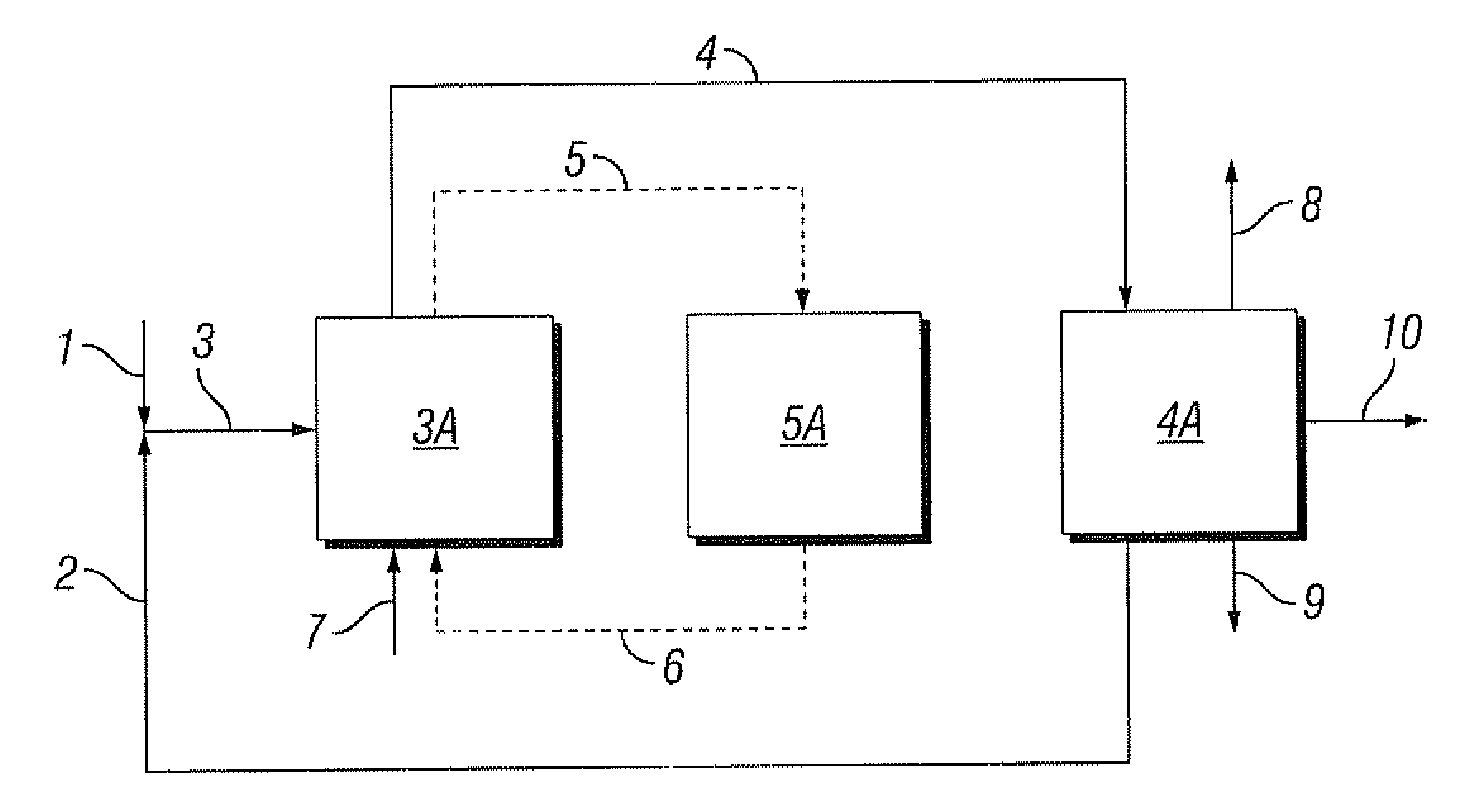Process for the conversion of lower alkanes to aromatic hydrocarbons
a technology of aromatic hydrocarbons and alkanes, which is applied in the direction of hydrocarbon preparation catalysts, organic chemistry, chemistry apparatus and processes, etc., can solve the problems of benzene shortages and high cost, and achieve high solid circulation rate, improved specific heat and thermal conductivity, and adequate heat transfer
- Summary
- Abstract
- Description
- Claims
- Application Information
AI Technical Summary
Benefits of technology
Problems solved by technology
Method used
Image
Examples
example 1
[0041]The details of the preparation methods, fixed-bed lab-scale testing procedures, and comparative initial performance results obtained under ethane aromatization conditions with a Pt / Ga catalyst made on ZSM-5 / alumina extrudate particles are described below. In the reference runs, fresh Pt / Ga catalyst charges were loaded “as is,” without any solid diluent. In addition, a charge consisting of 40% v of the Pt / Ga catalyst (specific heat—1.17 kJ / (kg-° K) (0.28 Btu / (lb-° R)) and 60% v of a commercially-available solid inert silica / alumina material (Denstone® 80 ⅛-inch spheres available from Saint-Gobain NorPro; specific heat—1.18 kJ / (kg-° K) (0.28 Btu / (lb-° R)) was tested under the same conditions.
[0042]The catalyst used in these tests was prepared on samples of an extrudate material containing 80% wt of CBV 3014E ZSM-5 zeolite (30:1 molar SiO2:Al2O3 ratio; available from Zeolyst International) and 20% wt of alumina binder. This cylindrical extrudate had a diameter of 1.6 mm. The samp...
example 2
[0051]In this example, ethane is converted to aromatic hydrocarbons using the process configuration shown in FIG. 1. 25 tonnes / hr (tph) of stream (1), which primarily constitutes ethane feed (including minor amounts of methane, propane and butane), is mixed with 10 tph of recycle stream (2) that consists primarily of ethane and other hydrocarbons which may include ethylene, propane, propylene, methane, butane and some hydrogen. The total feed amounting to 35 tph (Stream 3) is introduced to the ethane aromatization reactor (3A). The unconverted reactants as well as the products leave the reactor (3A) via stream (4) and are fed to the separation system (4A). The unconverted reactants and light hydrocarbons are recycled back (stream 2) to the reactor while the separation system (4A) yields 7 tph fuel gas (stream 8—predominantly methane and hydrogen), 4 tph C7+ liquid products (stream 9) and 13 tph benzene (stream 10).
[0052]The aromatization reactor (3A) is a fluidized bed reactor syste...
PUM
| Property | Measurement | Unit |
|---|---|---|
| temperature | aaaaa | aaaaa |
| temperature | aaaaa | aaaaa |
| temperature | aaaaa | aaaaa |
Abstract
Description
Claims
Application Information
 Login to View More
Login to View More - R&D
- Intellectual Property
- Life Sciences
- Materials
- Tech Scout
- Unparalleled Data Quality
- Higher Quality Content
- 60% Fewer Hallucinations
Browse by: Latest US Patents, China's latest patents, Technical Efficacy Thesaurus, Application Domain, Technology Topic, Popular Technical Reports.
© 2025 PatSnap. All rights reserved.Legal|Privacy policy|Modern Slavery Act Transparency Statement|Sitemap|About US| Contact US: help@patsnap.com


